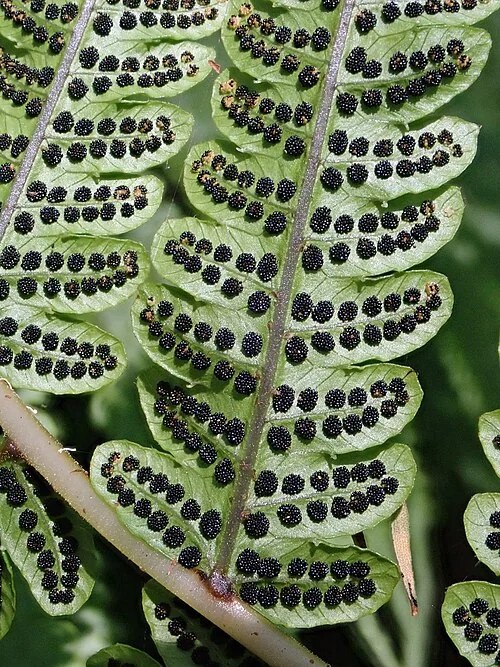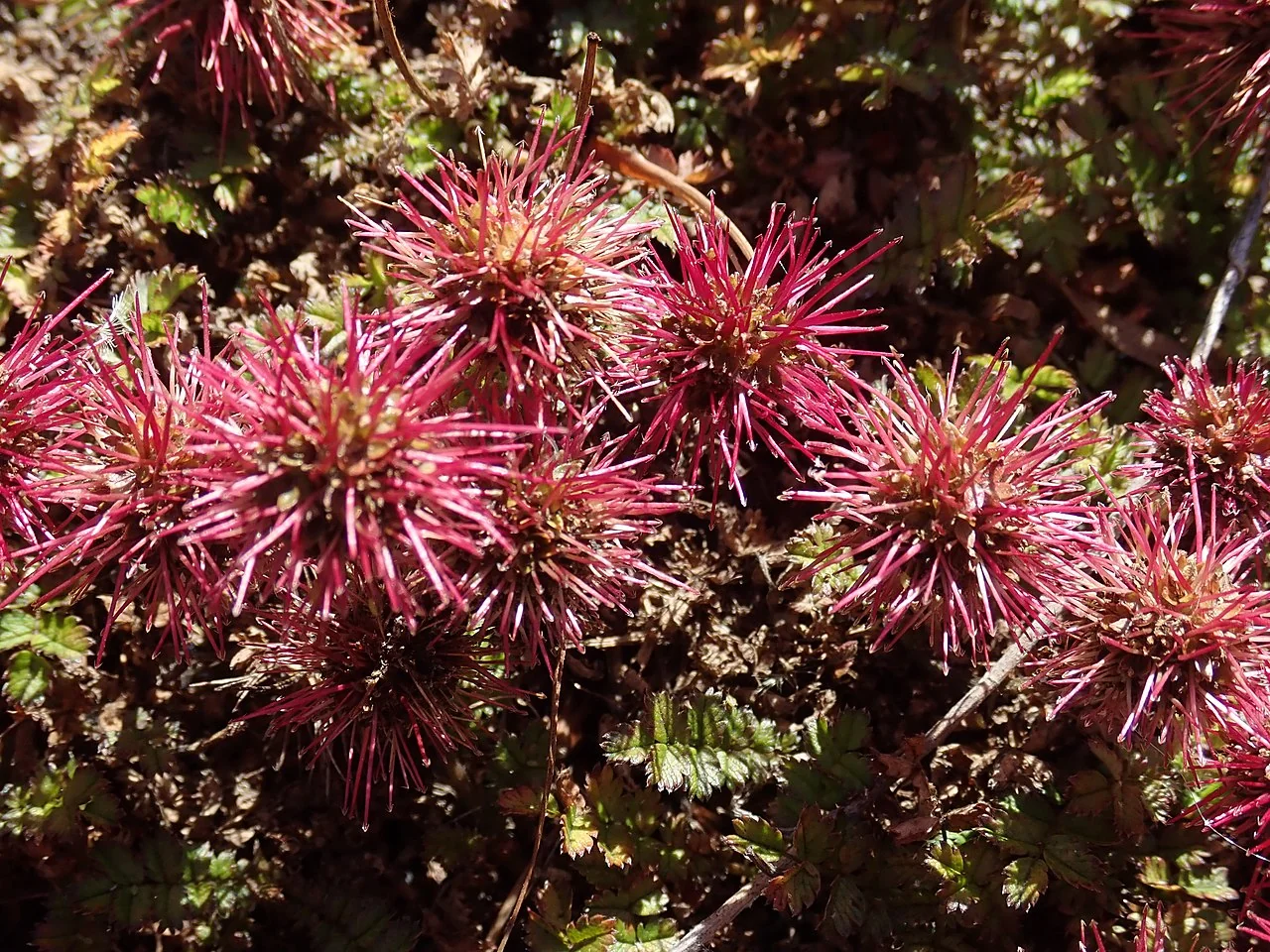
Gully Fern
Pneumatopteris pennigera
A slender tree fern of damp, shaded gullies, forming a narrow trunk topped with airy fronds; excellent for sheltered, moist plantings. Learn more in our native plants guide .

Plant Description
Botanical Features
Gully Fern ( Pneumatopteris pennigera ), also known as lime fern or pākauroharoha, is a terrestrial fern belonging to the family Thelypteridaceae. It possesses an erect to oblique rhizome covered with broad, brown scales. Older plants can form a small trunk, occasionally reaching up to 1 meter tall. The fronds are tufted, erect, and can range from 40 to 110 cm long, sometimes up to 1.5 meters. They are typically light green to mid-green, oblong-lanceolate, and pinnate. The stipe (frond stalk) is shorter than the lamina, slightly succulent, and often scaly at the base. The lamina is 1-pinnate to 2-pinnate-pinnatifid, with pinnae deeply lobed, membranous to herbaceous, and almost glabrous. The pinnae are cut obliquely to about halfway into broad, rounded lobes with slightly crenate margins. Basal pinnae are gradually reduced in size. A distinctive feature is its leaf venation, where the lowest veins from adjacent lobes unite to form a single excurrent vein. Sori (spore clusters) are usually copious, unprotected (exindusiate), and arranged in two rows, closer to the mid-vein than the margin. Sporangia lack glands or hairs. The abaxial (lower) surface of the costae (midribs of pinnae) may have ovate scales when young, and acicular and capitate hairs can be present on various surfaces.
Quick Facts
Overview
| Scientific Name | Pneumatopteris Pennigera |
|---|---|
| Height | 2-6 m |
| Spread | 2-3 m crown |
| Light | Shade to dappled light |
| Water Needs | Consistently moist |
| Frost | Protect from severe frost |
| Frost Tolerance | Hardy once established |
| Salt Tolerance | Low; requires protection from salt exposure |
| Growth Rate | Moderate |
| Lifespan | Long-lived perennial |
Climate Best Suited to
Regional climate suitability across major New Zealand cities.
Regional Suitability
| Whangārei | Ideal |
| Auckland | Ideal |
| Hamilton | Suitable |
| Rotorua | Suitable |
| Tauranga | Ideal |
| Gisborne | Ideal |
| New Plymouth | Ideal |
| Whanganui | Ideal |
| Palmerston North | Suitable |
| Napier | Ideal |
| Wellington | Ideal |
| Nelson | Ideal |
| Christchurch | Suitable |
| Dunedin | Suitable |
| Invercargill | Suitable |
| City | Climate Suitability |
|---|
Natural Habitat
Gully Fern ( Pneumatopteris pennigera ), also known as lime fern or pākauroharoha, is a terrestrial or swamp fern found in New Zealand and parts of Australia. In New Zealand, it is widely distributed from coastal to montane areas, typically from near sea level up to about 700 meters.
Key Habitats Include:
- Riparian Zones: Its natural habitat primarily includes alluvial flats, banks of rivers and creeks, gullies, streamsides, and alluvial terraces. It is often found on frequently flooded ground, showcasing its adaptation to moist, riparian environments.
- Damp Sites: It thrives in damp sites, often in association with limey springs, on sandy calcareous soils or limestone. While it shows an affinity for calcareous soils in Australia, it does not exhibit the same preference in New Zealand.
- Forest Understory: It occurs under various forest types, including wet sclerophyll forest, kauri, podocarp, broadleaved, and beech forests. It can also be found beneath canopies of tea-tree, paperbark, dogwood, mānuka, kānuka, and Salix species, and in Carex secta swamps.
Preferred Conditions:
- Shade and Moisture: While usually found in heavy shade, it can tolerate more open areas if its roots remain permanently damp. This highlights its preference for consistently moist and shaded conditions.
The Gully Fern's presence in these diverse, moisture-rich habitats underscores its ecological importance in contributing to the biodiversity and structural complexity of New Zealand's native forest understories and riparian zones.
Plant Conservation
Pneumatopteris pennigera (also known as Lime Fern) is currently classified as "Not Threatened" in New Zealand as of 2023, with a qualifier of "TO" (Threatened Overseas). This status was also reported in the 2012 and 2017 New Zealand Threat Classification Series.
Growing Requirements
Soil
Well-drained, moderately fertile soils; avoid prolonged waterlogging.
Light
Performs in full sun to partial shade depending on species.
Water
Keep evenly moist while establishing; reduce irrigation as roots develop.
Temperature
Hardy in most regions of Aotearoa once established.
For Gully Fern ( Pneumatopteris pennigera ), choose a site with shade to dappled light and soil that is well-drained, moisture-retentive. Incorporate composted organic matter to improve structure and drainage. Plant with the crown or root collar at soil level, then apply a 5-8 cm mulch to moderate temperature, conserve moisture, and suppress weeds. Protect young plants from extremes while establishing and consider the stated frost tolerance (seasonal) when siting near exposure or cold air drains.
Planting Guide
Gully Fern is a beautiful and delicate native fern that can bring a lush, verdant feel to shaded, moist areas of your garden. Its preference for damp, sheltered environments makes it ideal for woodland gardens, alongside streams, or in other consistently moist locations. Proper planting and ongoing care will ensure this graceful fern thrives.
1. Site Selection:
- Light: Gully Fern thrives in heavy shade to dappled light. It is crucial to protect it from direct sunlight, which can scorch its delicate fronds. Ideal locations include under the canopy of large trees, in shaded gullies, or on the south side of buildings.
- Soil: It requires consistently moist, humus-rich, and well-drained soil. It naturally occurs in alluvial flats, stream banks, and damp forest understories. Incorporate plenty of organic matter, such as compost or leaf mould, to improve soil structure and moisture retention. While it tolerates various soil types, it cannot withstand dry conditions.
- Moisture: This fern has high water requirements and needs consistently moist soil year-round. It is less tolerant of drought than some other ferns.
- Shelter: Provide shelter from strong winds, which can damage its fronds and lead to desiccation.
2. Planting Instructions:
- When to Plant: The best time to plant Gully Fern is in spring or autumn, when temperatures are mild and rainfall is more reliable. This allows the plant to establish its root system before extreme weather conditions.
- Preparation: Dig a hole that is twice the width of the root ball and to the same depth. Gently remove the fern from its container, minimizing root disturbance.
- Placement: Plant at the same level as it was in the container. Backfill the hole with soil, gently firming it around the roots to remove air pockets.
- Watering: Water thoroughly immediately after planting to settle the soil.
- Spacing: For mass planting or groundcover, space plants about 30-50 cm apart.
3. Ongoing Care:
- Watering: Water regularly and deeply, especially during dry periods, to ensure the soil remains consistently moist. Never allow the soil to dry out completely.
- Mulching: Apply a generous layer of organic mulch, such as leaf mould or bark chips, around the base of the fern to retain moisture, regulate soil temperature, and suppress weeds. Keep the mulch clear of the crown to prevent rot.
- Fertilizing: A light application of a balanced liquid fertilizer in spring and summer can support healthy growth, but avoid overfeeding.
- Pruning: Remove old, discoloured, or damaged fronds at the base to encourage fresh growth and maintain a tidy appearance. This can be done as needed throughout the year.
- Pests and Diseases: Gully Fern is generally robust, but monitor for common fern pests like scale or mealybugs. Ensure good air circulation to prevent fungal issues in humid conditions.
Ecosystem Notes
- Bank stabiliser: Rhizomes knit soil on shaded stream margins.
- Canopy effect: Fronds reduce splash erosion and buffer humidity.
- Associates: Common with tree ferns, Blechnum / Austroblechnum , and nīkau in coastal forests.
Uses and Significance
Garden and Restoration
A slender tree fern of damp, shaded gullies, forming a narrow trunk topped with airy fronds; excellent for sheltered, moist plantings.
- Shaded, moist gardens
- Forest understorey structure
Propagate Gully Fern by division of established clumps in cool, moist conditions or by spores raised in sterile medium with bottom heat. Keep humidity high and air movement gentle to limit fungal issues while young fronds harden.
Cultural Significance
Pneumatopteris pennigera , also known as Gully Fern, Pākau, or Piupiu, holds cultural significance, particularly in New Zealand (Aotearoa).
Its cultural uses Include:
- Food: Young fronds of the plant can be eaten.
- Hāngī preparation: The fronds were traditionally used to wrap food cooked in a hāngī (a traditional Māori earth oven), serving to impart flavor and protect the food from dirt.
- Medicinal applications: Historically, in Whangārei, the scraped roots of Pneumatopteris pennigera were applied as poultices for boils, noted for their "very drawing" properties.
Landscaping Ideas
Shade and Streamside Plantings
- Fern gullies: Combine with tree ferns for layered frond textures.
- Rain gardens (shaded): Suits consistently moist, free-draining depressions.
- Under-canopy massing: Repeats gracefully along paths in cool shade.
Seasonal Care Calendar
Spring
- Plant and mulch
- Protect new growth from weeds
Summer
- Deep watering in drought
- Monitor pests
Autumn
- Light formative pruning
- Top up mulch
Winter
- Plant eco-sourced stock
- Stake in windy sites
Pruning and Maintenance
Techniques and Timing
Generally minimal; formative work when young and removal of damaged wood.
Prune Gully Fern lightly to maintain structure; remove damaged shoots and avoid hard cuts on older wood.
How to Grow Gully Fern
Gully Fern ( Pneumatopteris pennigera ) is a moisture-loving, shade-tolerant fern that is most reliably propagated from spores; established clumps can also be divided. Provide an evenly moist, humus-rich medium and shelter from direct, drying sun during establishment.
From Spores
Collect ripe fertile fronds when sporangia darken and begin to release dust-like spores. Place fronds in a clean paper bag to shed spores, then sow onto the surface of a sterilised, fine, moisture-retentive medium (e.g., milled peat with a little fine sand). Do not cover. Seal containers to maintain high humidity and place in low light at 18-22°C. A green prothallus film should develop in weeks; once heart-shaped gametophytes form, maintain very gentle moisture until sporophytes (true fronds) appear. Prick out tiny sporophytes carefully into trays once large enough, then grow on shaded and humid before potting individually.
Division of Clumps
Where plants form clumps, divide in cool, moist weather. Lift carefully, wash soil from the roots, and separate crowns with several healthy fronds and firm rhizome sections. Replant divisions at original depth into a humus-rich, well-drained but moisture-retentive mix. Keep evenly moist and shaded until strong new growth appears.
Planting and Establishment
Site in bright, filtered light to deep shade with constant moisture and good drainage. Enrich soil with leaf mold or compost and mulch to maintain humidity, keeping mulch off the crown. Water regularly - never allow to dry out. Apply a dilute, balanced liquid fertiliser in spring and summer if needed. Remove old, tatty fronds as new growth emerges.
Pests and Diseases
Moisture without Stagnation
- Frond scorch: Hot, dry winds brown pinnae; provide shade and steady moisture.
- Crown rot: Standing water around the crown causes rot; ensure drainage even in wet sites.
- Slugs/snails: Can graze new croziers; hand-pick or use barriers.
Bonus Tip
Expert Growing Advice
During dry spells, it is crucial to water Gully Fern early in the day. This practice ensures that the fronds have ample time to dry before nightfall, which helps maintain essential humidity for healthy growth while significantly reducing the risk of fungal spotting and other moisture-related issues.







